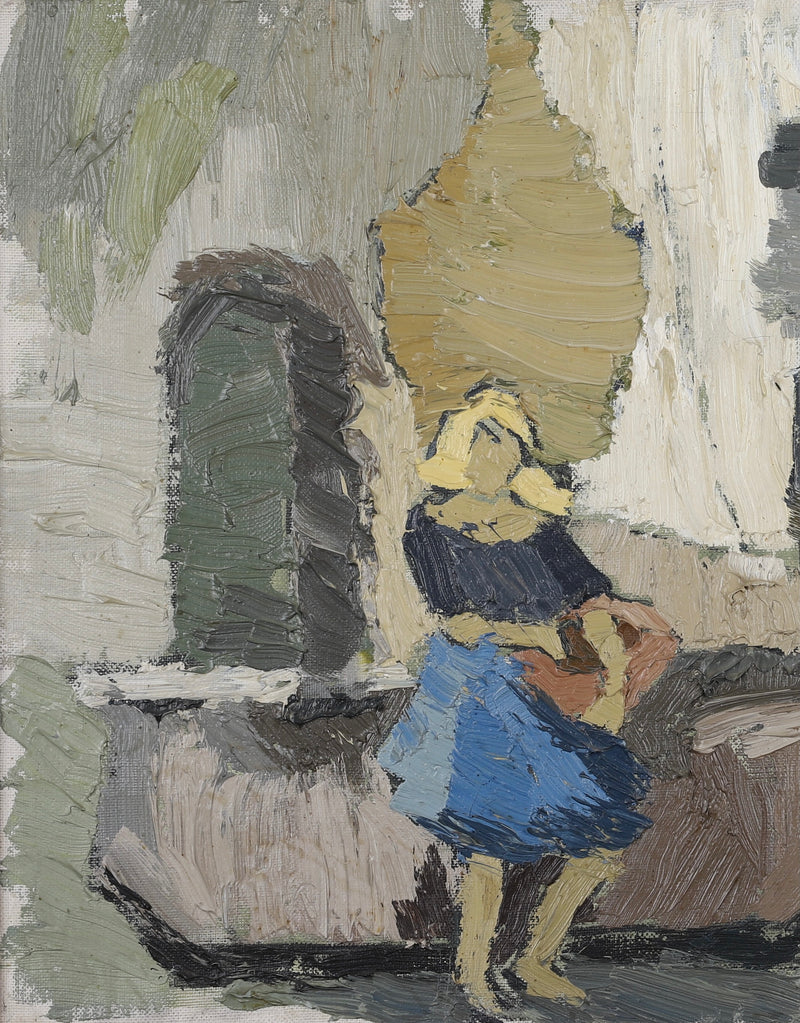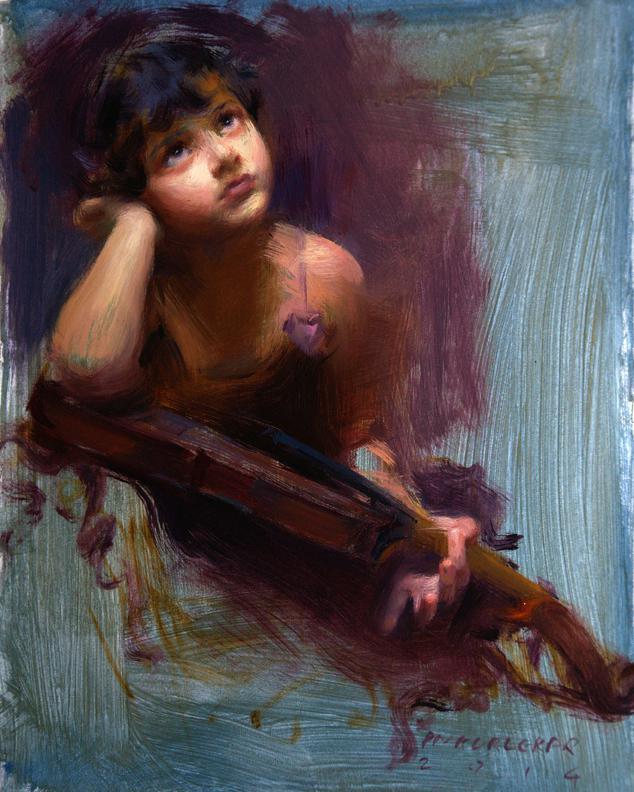The Function of Emotion and Expression in Figurative Oil Painting: A Comprehensive Evaluation of Subject and Make-up
The interplay of feeling and expression in figurative oil paint serves as a critical lens with which one can examine the complex relationship in between subject issue and composition. Artists harness numerous techniques, from color option to brushstroke dynamics, to grow psychological resonance within their works.
Comprehending Emotion in Art
Feeling in art functions as a powerful channel for expression, permitting artists to communicate intricate feelings through their work. In metaphorical oil paint, this emotional depth is commonly portrayed through the representation of the human number, capturing the subtleties of human experience. The selection of subject, color combination, and brushwork all add to the psychological resonance of a piece.
Artists often bring into play individual experiences, social issues, or universal styles to stimulate sensations in the visitor. A picture might mirror susceptability, while a dynamic figure in motion can symbolize freedom or turmoil. These emotional threads link the customer to the art work, promoting a discussion that goes beyond the aesthetic tool.
Moreover, the interplay between light and darkness can intensify psychological strength, assisting the visitor's stare and attracting focus to certain components within the make-up. Making use of structure in oil painting even more adds layers of complexity, inviting a responsive feedback that boosts the psychological experience. Generally, comprehending emotion in art is critical for valuing the nuances that define figurative oil paint, as it changes plain depiction into a profound exploration of the human condition.
Trick Components of Structure
In the realm of figurative oil painting, the make-up offers as the underlying structure that organizes visual aspects and boosts the emotional story. Necessary components of structure include balance, contrast, prime focus, and rhythm, each adding to the overall impact of the art work.
Equilibrium refers to the circulation of visual weight within the paint, which can be accomplished through asymmetrical or in proportion arrangements. A healthy composition gives stability, allowing the customer to engage with the item harmoniously - figurative oil painting. Comparison, on the other hand, entails juxtaposing various aspects, such as dark and light or warm and cool shades, to guide the customer's eye and evoke psychological responses
The focal point is vital, as it routes attention to the most significant part of the paint, frequently highlighting the psychological core of the story. By masterfully incorporating these vital components, musicians can craft engaging and psychologically powerful figurative oil paints that mesmerize and involve their target market.
Topic Issue and Its Effect
Subject plays a crucial duty in metaphorical oil paint, as it not just functions as the structure for the story however likewise shapes the customer's analysis and emotional interaction with the artwork. The option of topic-- be it a solitary figure, a group dynamic, or a thematic representation-- straight affects the psychological ambience shared to the target market.

As an example, portraits frequently stimulate individual connections, disclosing the details of human expression and character, while scenes depicting public activities can produce a sense of belonging or nostalgia. The social and historic context of the subject issue improves the audience's understanding, motivating much deeper representations on social standards, values, and the human problem.
Different subject issues likewise produce varying levels of interaction; a dramatic conflict depicted with figures in tension might evoke navigate to these guys feelings of anxiety or empathy, while calm landscapes can invoke peace and reflection. Inevitably, the effect of subject issue in metaphorical oil painting is extensive, as it works as a channel for psychological vibration, directing the customer's feedback and interpretation, and promoting a connection between the onlooker and the art work. This interplay is necessary for the effective interaction of the artist's intent.
Techniques for Evoking Feelings
The efficiency of figurative oil paint in sharing emotions is considerably influenced by the strategies utilized by the musician. One of the most important methods is making use of shade concept, where the critical selection of shades can evoke certain emotional actions. Warm colors, such as reds and oranges, frequently elicit sensations of enthusiasm or aggressiveness, while cooler tones like blues and eco-friendlies often tend to evoke peace or unhappiness.
An additional necessary technique is the control of light and shadow, called chiaroscuro. This method improves the three-dimensionality of numbers, creating significant contrasts that can magnify emotional depth. The positioning of light can lead visitors' emotions, highlighting details aspects of the structure.
Brushwork likewise plays a vital function; loose, meaningful strokes can communicate energy and spontaneity, whereas company website smoother techniques may recommend tranquility or precision. Furthermore, the arrangement of topics within the composition can affect psychological influence. Close proximity can suggest intimacy, while range might suggest seclusion.
Ultimately, the mix of these methods enables artists to craft stories that resonate with the visitor, transforming a simple visual experience into an expressive emotional journey. - figurative oil painting

Study of Notable Works
Checking out noteworthy works of figurative oil painting reveals exactly how various methods are employed to evoke powerful feelings. One exemplary case is Edvard Munch's "The Scream," where the distorted figure and swirling background convey existential fear. Munch's use of color-- vivid oranges and deep blues-- heightens the psychological effect, showcasing how scheme options can shape customer experience.
An additional significant job is Pablo Picasso's "Les Demoiselles d'Avignon." Below, fragmented types and strong brushstrokes show a tumultuous emotional landscape, testing typical representations of the women figure. Picasso's innovative composition not only captures the audience's focus however likewise invites contemplation on styles of identification and sexuality.
Additionally, Frida Kahlo's "Both Fridas" offers an emotional expedition of duality and self-identity. The contrasting numbers, connected by a shared heart, exhibit Kahlo's psychological deepness and individual narrative. figurative oil painting. Her careful interest to detail and symbolic elements serve to involve visitors on a natural level
These case studies highlight the extensive connection in between emotion and composition in metaphorical oil paint, exposing how artists harness technique to interact complicated sensations and stories that reverberate throughout time and society.

Conclusion
To pop over here conclude, the interaction of feeling and expression in figurative oil painting dramatically enhances the audience's experience and interpretation of the art work. With a mindful selection of subject and compositional strategies, artists share profound stories that reverberate on both universal and personal levels. The application of shade theory, brushwork, and chiaroscuro more intensifies emotional deepness, changing each canvas right into a powerful representation of the intricacies of the human experience.
In metaphorical oil painting, this psychological deepness is frequently depicted via the depiction of the human figure, catching the subtleties of human experience.Furthermore, the interplay between light and shadow can magnify emotional strength, leading the audience's look and attracting interest to particular elements within the make-up. The use of structure in oil paint even more includes layers of complexity, inviting a tactile reaction that boosts the emotional experience.The focal factor is critical, as it directs attention to the most significant component of the painting, frequently highlighting the psychological core of the narrative. Ultimately, the effect of subject issue in figurative oil painting is extensive, as it offers as an avenue for psychological vibration, leading the viewer's reaction and analysis, and cultivating a link in between the viewer and the art work.